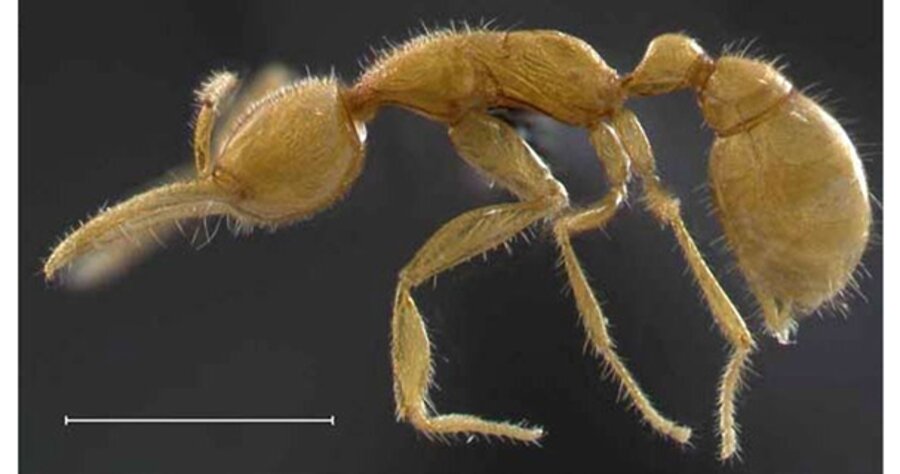Blind 'ants from mars'
Loading...
Since the days of the T. rex, few animals have evolved into such numbers and filled such diverse habitats as ants. Now, scientists say they have uncovered a “living fossil” among the picnic spoilers – a tiny, blind ant whose species appears to be what the team calls “the sole surviving representative” of some of the first ants, which are thought to have evolved from wasp ancestors 120 million years ago.
The researchers from the US, Germany, and Brazil dubbed the species Martialis heureka, or the ant from Mars. The specimen they uncovered is only about 1/10th of an inch long, has no eyes, and lives in the soil. DNA studies, along with the ant’s physical traits, suggest that it occupies a place at the very base of the ant family tree. It also belongs to its own new subfamily of ants – the first new subfamily uncovered since the early 1920s, says the research team, led by Christian Rabeling, an evolutionary biologist at the University of Texas at Austin.
Not all of the early ants were blind or lived underground, the team holds, but M. heureka’s traits suggest that ants adapted to different ecological niches relatively quickly after they branched off the wasp’s early lineage.
The results appear in this week’s issue of the Proceedings of the National Academy of Sciences.





